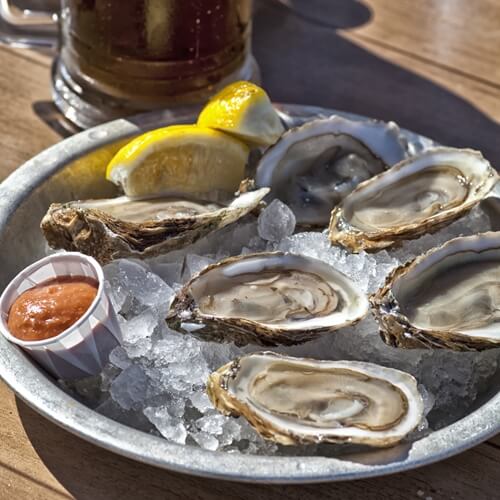Tips for avoiding oyster mishaps
For an easy and delicious meal, you can head to your favorite restaurant and order oysters. But you’re attending online culinary school for a reason: you want to cook! These slippery bivalves can be intimidating. They’re not always easy to open and all oysters are not created equal, so you’ve got to know what you’re doing. Try these tips to avoid common mishaps with the delicate mollusks:
Buy oysters from a reputable vendor
The kind of oysters that you can get at the local supermarket are likely frozen. The best place to find high-quality oysters is at a fish market. Not only will the mollusks be fresh and still alive, but you will also know where they come from. Often, packaged oysters are not labeled with their origin or come from several places, which means you are potentially getting a bag full of very different-tasting shellfish.
Know your flavors
The origin of the oyster changes what it tastes like. According to Claire Saffitz, the assistant food editor of Bon Appetit, West Coast oysters are often small and sweet. Oysters from the East Coast tend to be briny and clean, and those from the Gulf are meaty. Try these different flavor options to see which works best with your recipe. If you are traveling, try locally-harvested oysters and consider using them in your dish for a unique flavor. If you aren’t familiar with a certain type of oyster and choose to use it in your dish, you may accidentally mis-pair the shellfish with the other flavors.
Be careful
The dangerous part of dealing with oysters? Shucking them. Not only is the knife sharp, but the actual shellfish can cause cuts of their own. Always use a very sharp oyster knife and be sure to point it away from your body at all times. Use pliers to crack a small bit of the shell off to allow for easy entry. Slide the knife tip into the gap, far enough to allow you leverage but do not go deep into the shell and accidentally cut the meat. Move the knife slowly along between the halves of the shell to open it. Then, cut the oyster meat off of the shells and refrigerate, cook or freeze them. Remember to pay special attention to moving slowly and deliberately, placing your hands on the oyster when cutting to avoid hurting yourself. You may want to hold the oyster with a towel or even invest in an oyster shucking glove if you plan on frequently shucking your own. This will protect your hand in case of a knife slip.


